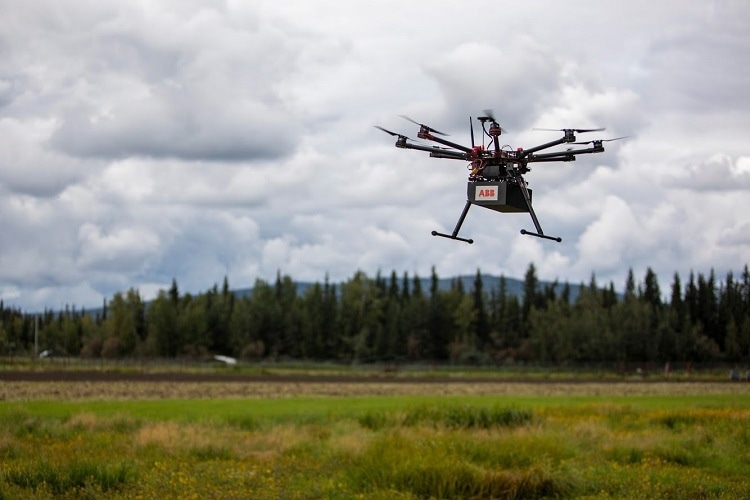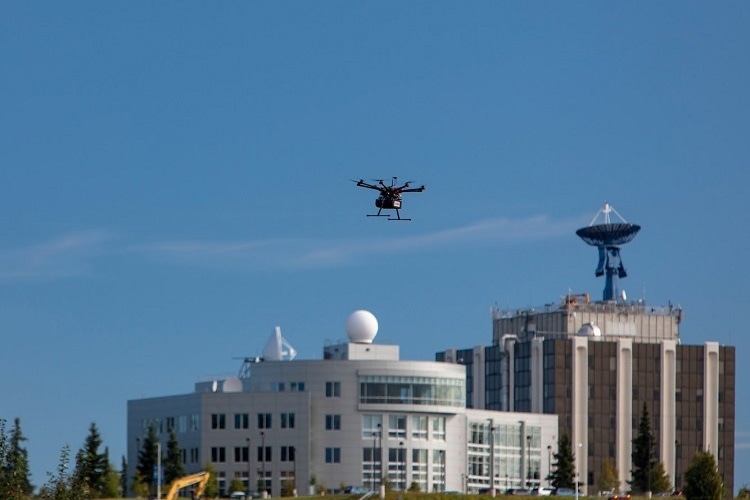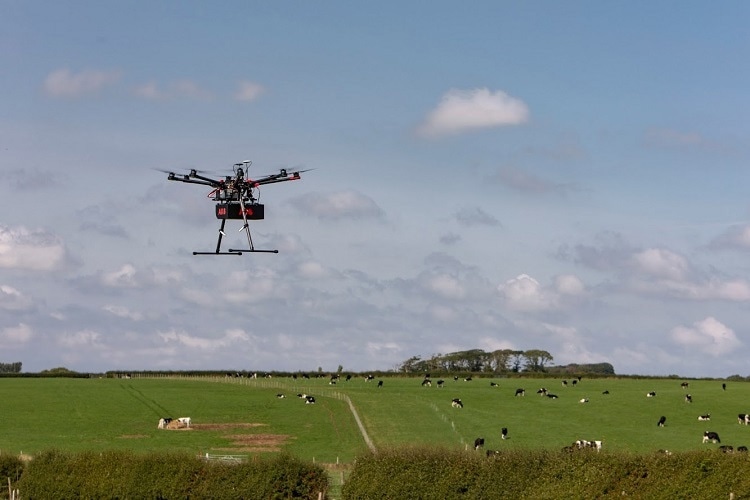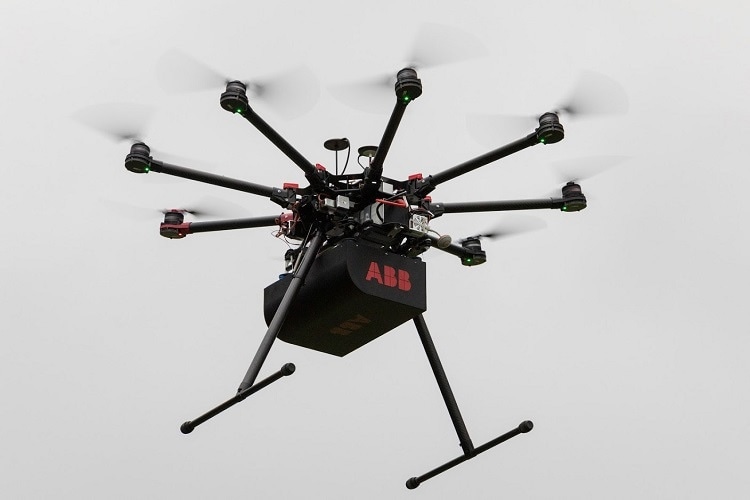 Interview conducted by Mychealla RiceDec 4 2018
Interview conducted by Mychealla RiceDec 4 2018Methane leaks are extremely dangerous to communities and surrounding environments. It is essential to detect any gas leak efficiently and effectively.
In this interview, Brian Leen, CTO at ABB Measurement & Analytics’ LGR product line talks to AZoM about the benefits of using ABB’s methane analyzer on unmanned aerial vehicles to detect gas leaks.
Methane leaks can create serious risks to environments and surrounding communities. Please tell our readers about how ABB’s Analyzers help prevent this?
ABB’s analyzer uses patented cavity-enhanced absorption spectroscopy to detect methane with a sensitivity more than 1000 times higher than conventional leak detection tools.
This extreme sensitivity allows ABB to quickly identify potential methane emissions at a distance while flying, which is not possible with other sensors. The ability to detect from the air far from the source makes it possible to survey natural gas infrastructures that are difficult or impossible to reach by foot, such as pipelines under water, under bridges, in dense forest, buried, or where the right of way is not granted. Frequent and thorough pipeline integrity survey can greatly decrease emissions that harm the environment as well as decreasing the risk of explosions.

How do the ABB analyzers detect methane in facilities, pipelines, and other assets without direct contact?
When methane is emitted from a leak source, it is carried by the wind and diffuses as it is mixed into the atmosphere, the concentration then decreases with increased distance.
This emitted gas can be detected downwind by flying or driving through the diffused plume with ABB’s UAV methane analyzer. ABB’s sophisticated analysis algorithms then process the measured data to identify locations where the methane concentration is aberrantly high, indicating that there is a leak upwind of the flight path.
Finally, the shape and magnitude of the measured methane and wind velocity are to estimate location of the leak point.

ABB's analyzers are able to detect methane leaks without direct contact.
How do the analyzers report the data? Is this quicker and more efficient than previous methods?
ABB’s analysis software automatically processes the collected methane, GPS and wind data to create a simple, easy to use report in either GIS compatible or PDF formats. These reports can be used to quickly identify areas in the pipeline network that potentially have leaks.
Additionally, the software features, such as the ABB Ability cloud storage tools, allow quick and efficient distribution of data and reports to all stakeholders anywhere in the world. Authorized users can view the progress of flights in real-time as well as review and act on processed leak reports.
What are the benefits of having analyzers in unmanned aerial vehicles compared to the traditional way? Is it an improvement?
Unmanned aerial vehicles have several advantages over current methods. When compared to a conventional survey performed on foot, UAV surveys require less time to cover larger areas and allow access to (pipeline) assets that may not be reachable by foot. There are also significant advantages when compared to manned survey flights. Specifically, the cost of operating UAVs is much lower than manned flights.
Additionally, UAV systems can (and are sometimes required) to fly lower than manned aircraft, which makes detection of diffuse methane gas plumes easier and more effective.
There are some disadvantages of using UAVs. Current regulations limit the operational range to the UAV while manned flights can cover larger distances. However, many UAV operators are working to prove that their systems can be safely flown over long distances and it is likely that the FAA will ultimately allow for legally flying industrial UAV systems beyond the line-of-sight.

What are the main features and benefits of the ABB methane analyzers?
ABB’s methane analyzer uses a particularly robust, sensitive and yet simple form of cavity enhanced optical absorption spectroscopy called Off-Axis Integrated Cavity Output Spectroscopy (OA-ICOS). This patented technology is able to detect single parts-per-billion (ppb) variation in the methane concentration where most commercially available methane sensors are only able to detect single part-per-million (ppm) levels of variation. Ppb-level sensitivity allows ABB’s sensor to detect anthropogenic variations (i.e. due to leaks) in atmospheric methane very far from the source.
The UAV sensor also exhibits a rapid time response to gas concentration changes (data reported every 100 milliseconds) which, along with ABB’s equally rapid computational analysis, makes the analyzer suitable for high-speed UAV gas survey. Additionally, OA-ICOS is unique among competing methodologies in its suitability to flying on UAVs because it is natively insensitive to environmental vibrations, pressure and temperature variations all of which can be extreme on UAVs.
ABB’s UAV methane sensor has undergone a significant light-weighting development resulting in an analyser with similar detection limits to conventional ABB analyzers (weighing at least 15kg) but at a weight of less than 3.4kg. The power consumption has also been reduced to 32W, which can be easily sourced by standard UAV batteries.
Finally, the sensor interface has been adapted and streamlined to provide the connections needed for UAV application, such as autopilot telemetry ingestion and wireless communication.
New sensor tech takes on an urgent climate problem
What applications will benefit the most out of the sensors on the unmanned aerial vehicles?
While pipeline integrity applications are the main market for ABB sensor (for the reasons outlined before), other users will benefit from a high precision, UAV flyable methane sensor. For example, environmental scientists working on quantifying methane emissions from natural (wetlands, permafrost, thermogenic seeps, termites, etc.) and anthropogenic sources (enteric agriculture, manure treatment, hydrocarbon extraction, landfills, etc.) have a new tool with which to improve the accuracy of measurements.

Can you tell us about any case studies that have had success using the ABB analyzers in unmanned aerial vehicles?
The ABB sensor has been successfully flight tested with several industrial and research groups around the world. ULC Robotics has tested the sensor for natural gas pipeline leaks detection on the East Coast of the United States and is helping utilities to improve pipeline integrity inspection in otherwise inaccessible locations using the ABB analyzer mounted to their custom Unmanned Aerial System (UAS).
What are the key benefits of using aerial vehicles for gas detection? What does this mean for the future of gas detection?
Aerial inspection improves safety on hard-to-reach segments of our natural gas distribution infrastructure. By detecting from a distance and with easy-to-fly UAV systems, the ABB analyzer allows more frequent inspection of these otherwise difficult-to-inspect assets thus improving the integrity of the whole pipeline system. As ABB’s aerial inspection tools gain widespread use, we anticipate that they will be applied more frequently to other parts of the pipeline network because of the simplicity and speed of aerial survey, resulting in a safer natural gas distribution and transmission pipeline system.
Where can our readers go to find out more?

To find out more please visit https://new.abb.com/products/measurement-products
About Dr. Brian Leen
Dr. Leen has been active in the development of Off-Axis Cavity Enhanced gas sensors for ABB's Los Gatos Research (LGR) product line for 8 years. He has worked extensively on optical design, data acquisition and analysis methods required for accurate, high-speed ICOS and CRDS. Prior to becoming CTO for the LGR product line, he oversaw SBIR contracts for the DOD, NASA, DOE, NIH and EPA on a variety of topics, including detection of chemical weapons, airspace intrusion by toxic VOCs, breath analysis of critically ill patients, ultra-precise detection of NO2 at the urban boundary, airborne NH3 detection, OCS in the stratosphere and isotopic analysis of nitrate sources in ground water.
Before joining Los Gatos Research in 2010, he was a doctoral candidate (Applied Physics Department) at Stanford University working on high-brightness, nano-apertures for data storage and inspection.
Disclaimer: The views expressed here are those of the interviewee and do not necessarily represent the views of AZoM.com Limited (T/A) AZoNetwork, the owner and operator of this website. This disclaimer forms part of the Terms and Conditions of use of this website.